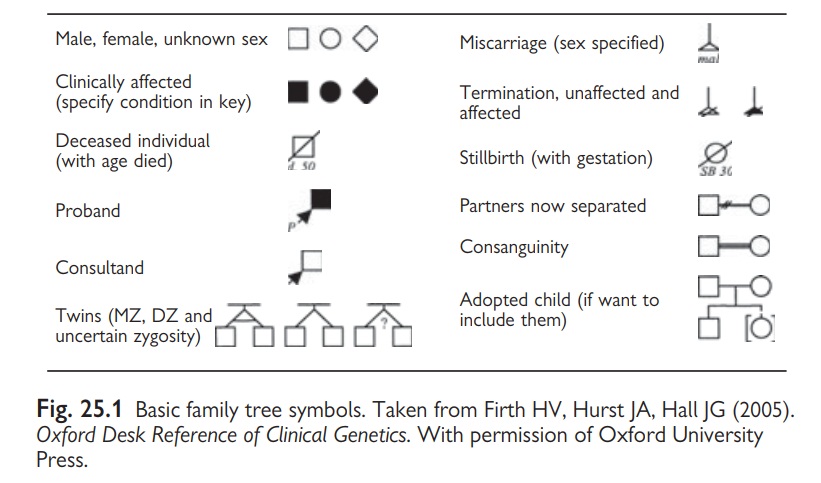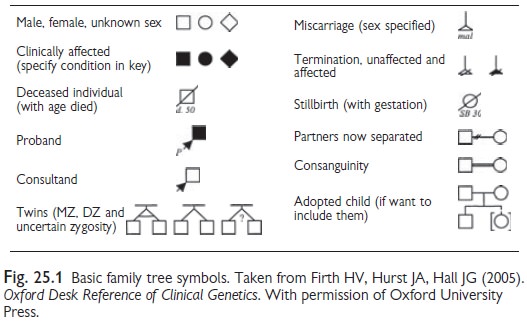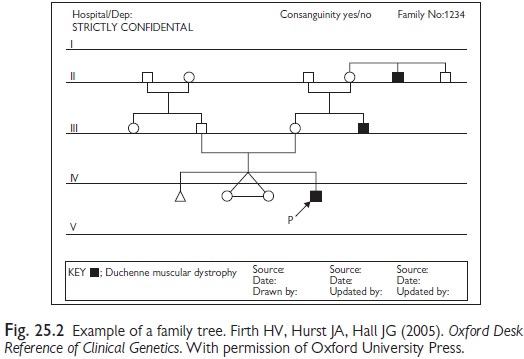Chapter: Paediatrics: Genetics
Paediatrics: Taking a family history

Taking a family history
A very important tool in clinical
genetics. One of the key skills in taking a family history is drawing a family
tree with all relevant symbols (see Fig. 25.1). The approach described here is
intended for routine use in a general paediatric setting. A more detailed
approach is indicated when assessing a patient with a known or possible genetic
disorder.

Drawing a basic family tree
•
Start
with your patient. Draw a 4
symbol for a male; 5
symbol for a female.
•
Next
add symbols for your patient’s parents and siblings. Record basic information
only, e.g. age, whether they are in good health, and whether there are any
concerns regarding development. If an individual has died, note age and cause
of death and annotate the family tree with an oblique stroke through the symbol.
•
Ask
whether there is any inherited disorder running in the family.
•
Ask
whether your patient’s parents are related (consanguinity increases the chance
of an AR disorder). Consanguinity is indicated by drawing a double line on the
family tree.
•
Ask
the key question ‘Has anybody else in your family had a similar problem to the
patient?’ Be aware that some conditions have variable expression, e.g. del
22q11 may present with cleft palate in one member of the family and congenital
heart disease in another.
•
Extend
the family tree upwards to include grandparents and sideways to include aunts,
uncles, and cousins. If you have not revealed a familial problem by this stage,
do not go further as you are unlikely to have missed an important familial
disease with onset in childhood. In the case of a suspected X-linked disorder
extend the family tree further on the maternal side (ask a clinical geneticist
to help you with this).
•
Shade
those people in the family tree affected by the disorder. This will help
determine whether there is a genetic problem, and, if there is, it will help to
suggest the pattern of inheritance.
For an example of drawing a family
tree see Fig. 25.2

Related Topics